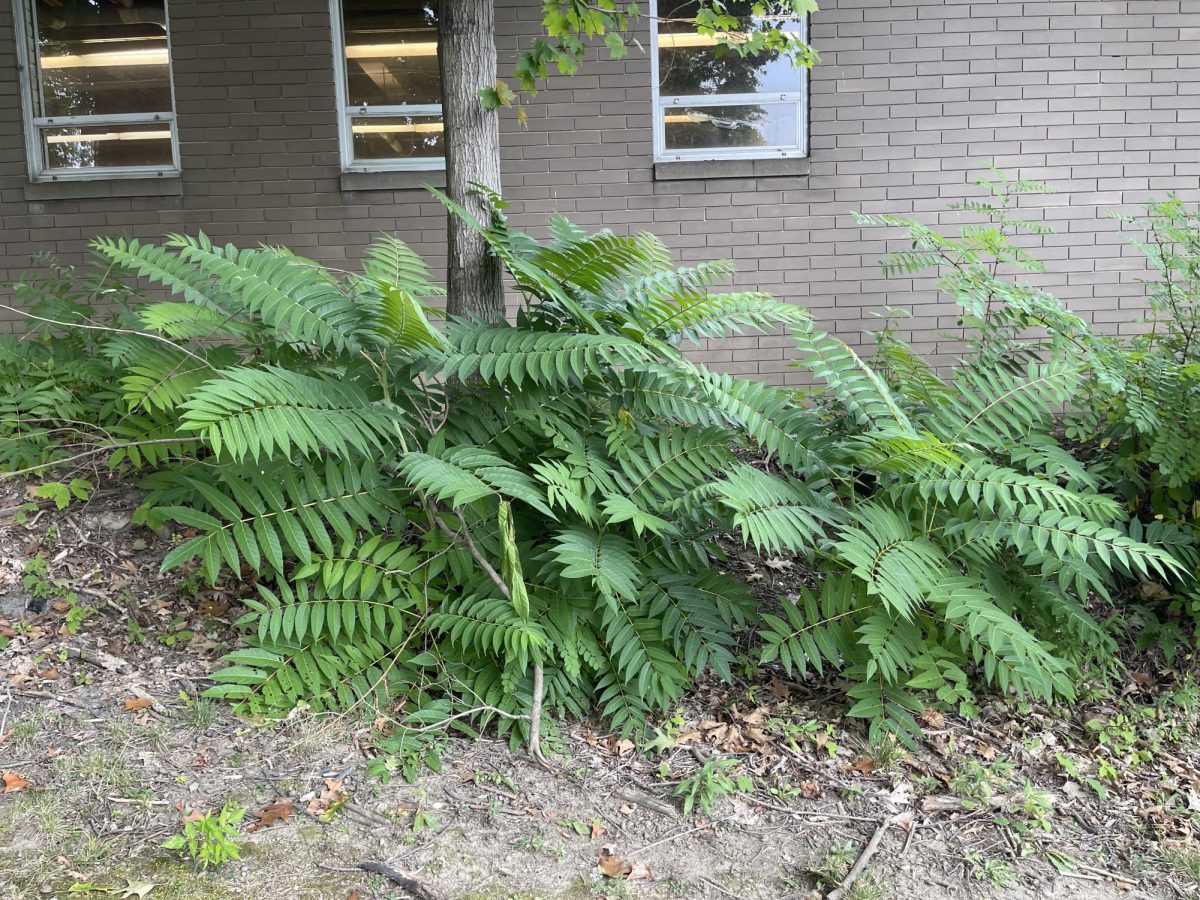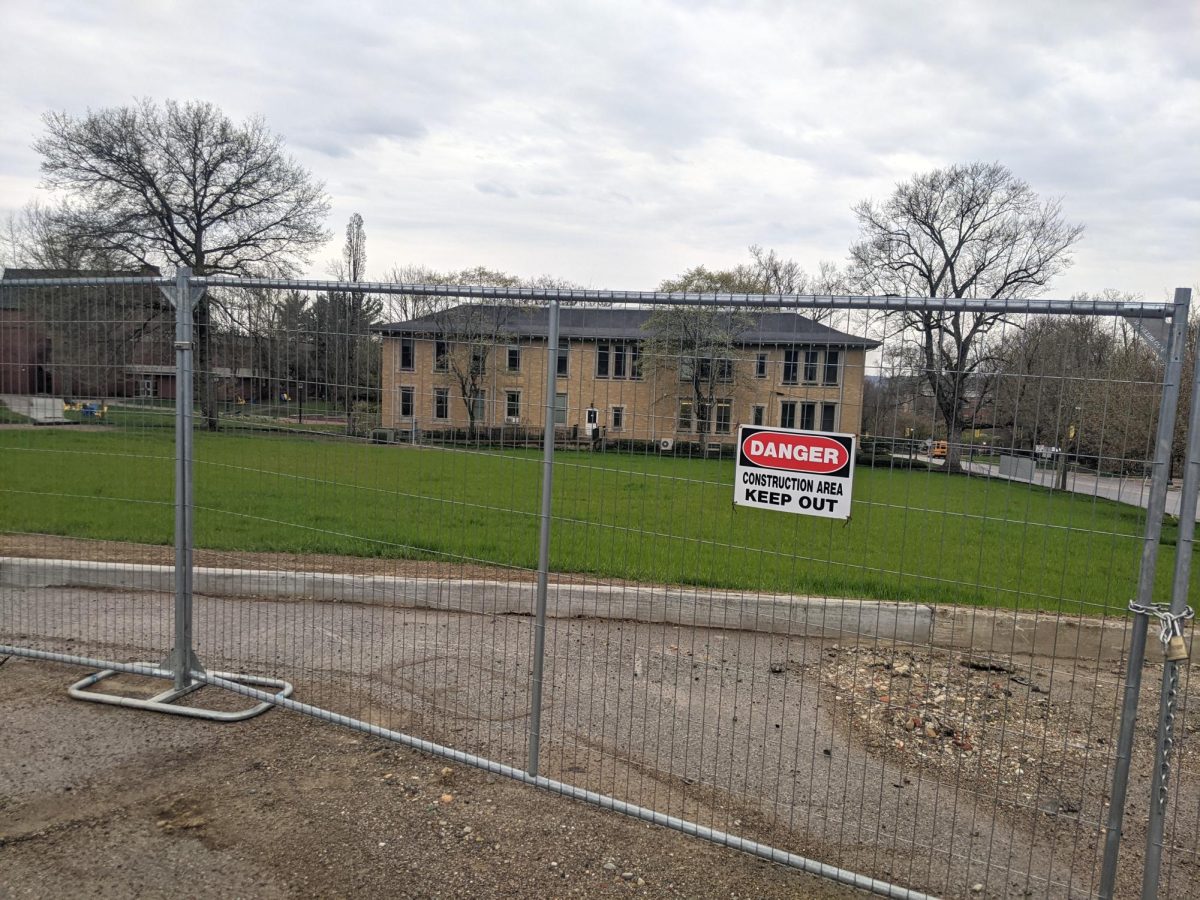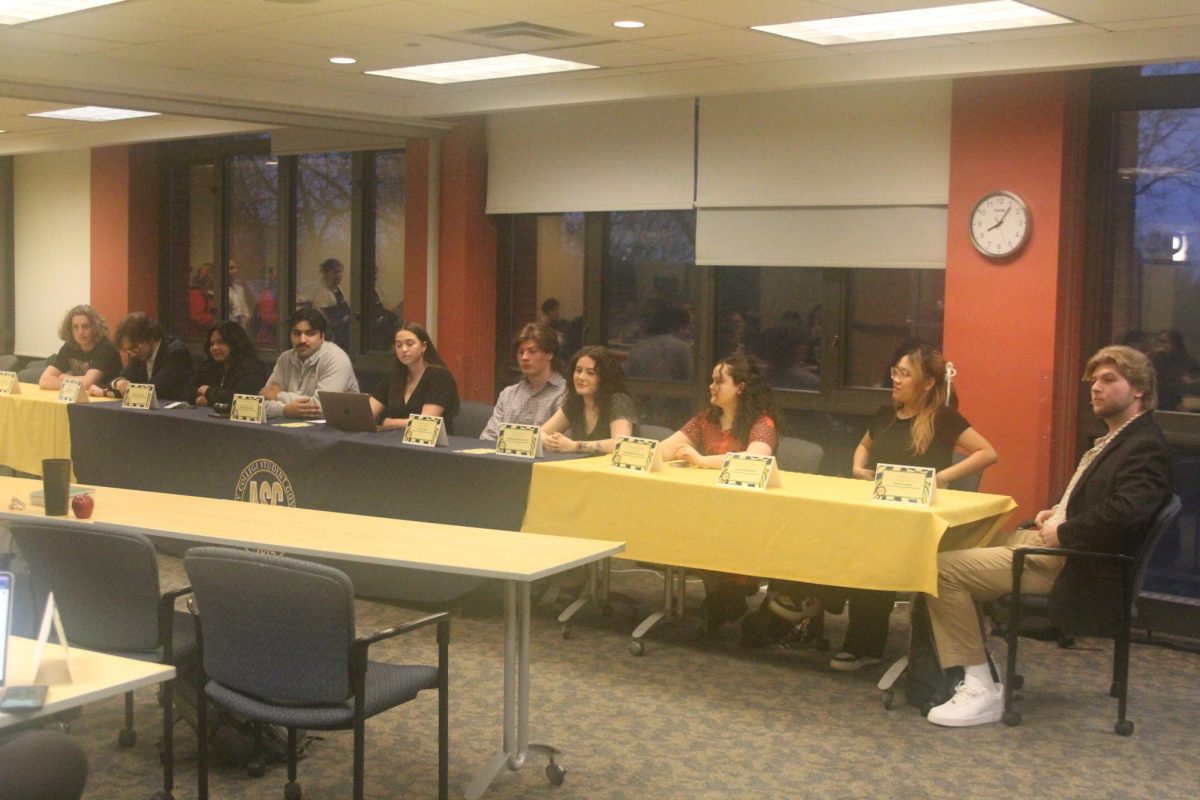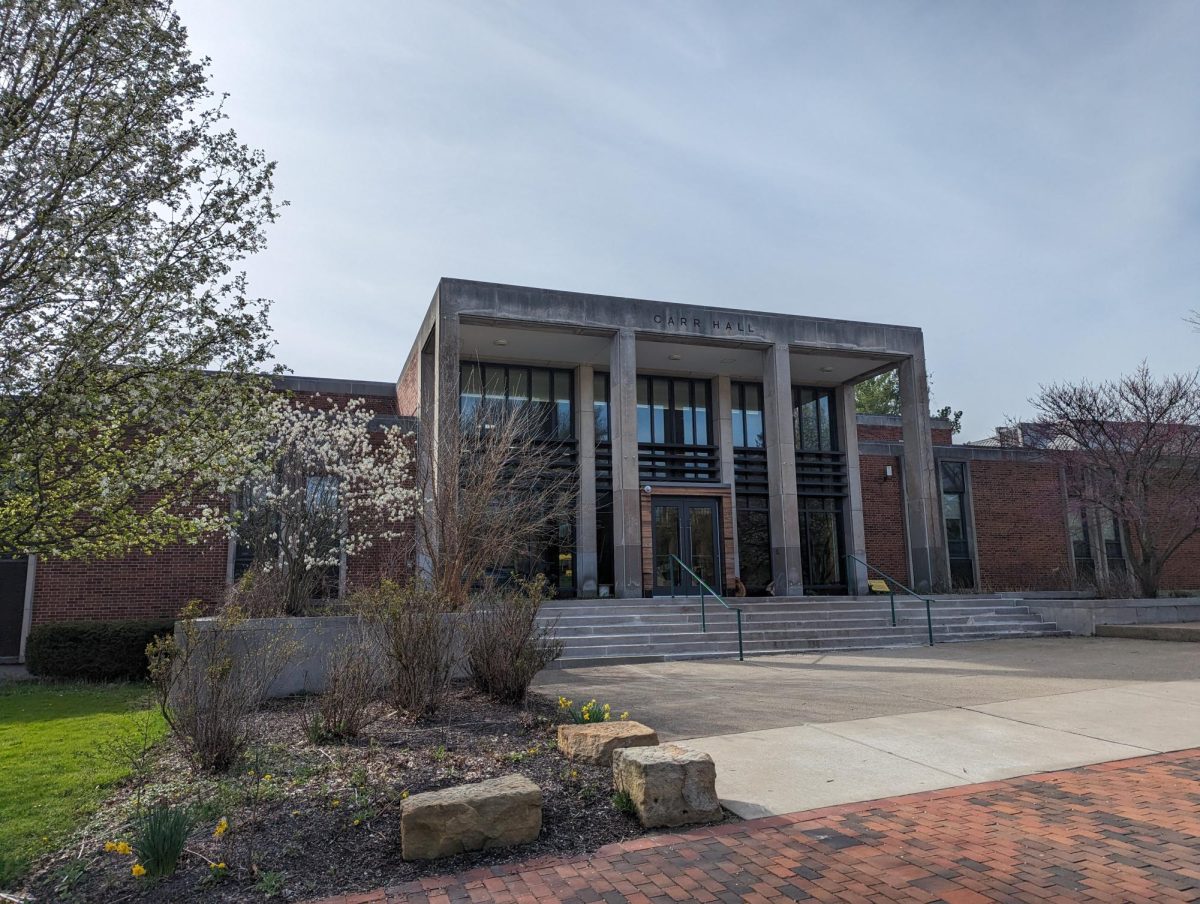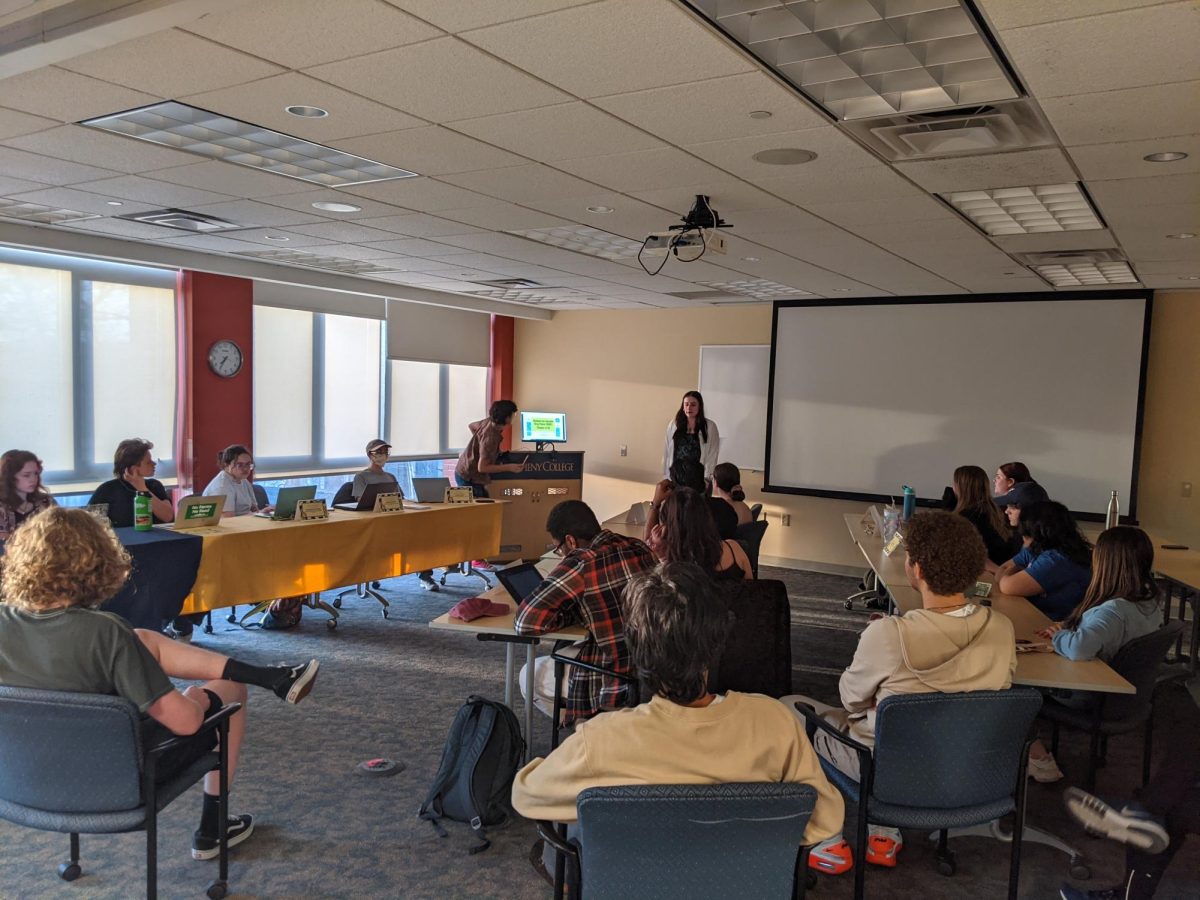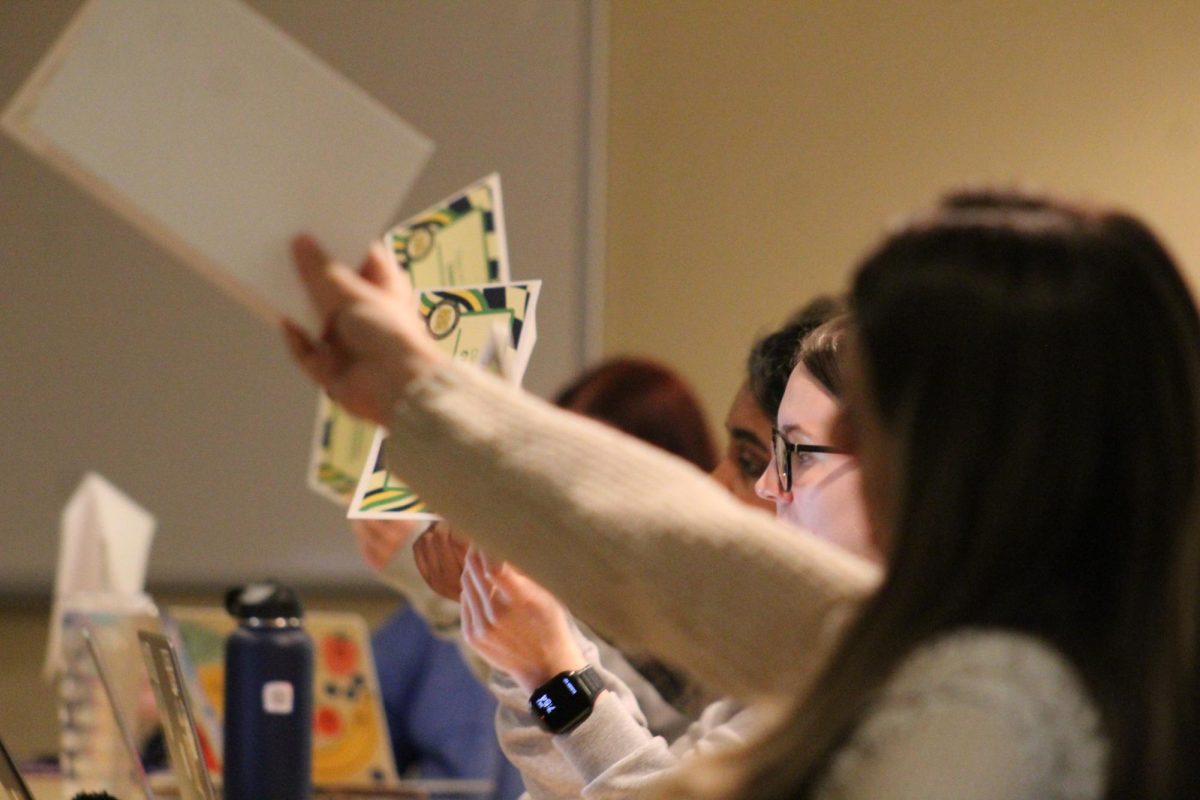Seeing a group of students sitting under the shade of trees lining Brooks Walk is not uncommon on a sunny afternoon at Allegheny College. The lush campus vegetation is often attractive for prospective students. So when students see a tree being flagged for removal or being cut down, it often raises alarms.
“I understand the students’ concerns,” said Physical Plant grounds worker Jim Mulligan.
Mulligan is responsible for landscaping and supplying the campus with compost. He works closely with Director of Sustainability Kelly Boulton, ’02, to ensure landscaping is sustainable.
Julia Sonen ’24 is majoring in Environmental Science and Sustainability and is studying the trees on campus for her senior comprehensive project, in which she will create a resiliency plan for the urban forest on Allegheny’s campus. While collecting data, Sonen alerted Physical Plant to an invasive tree growing off of Loomis Street, adjacent to the Schultz Hall parking lot.
“Since (Physical Plant Director) Joe Michaels has taken over the Physical Plant, we’ve had a better relationship with the environmental science students,” Mulligan said. “We listen to the students when making decisions that will impact them, as it is their college campus.”
After discussing the Loomis Street tree with Sonen, Mulligan decided the tree would be removed.
The tree is a Tree of Heaven (Ailanthus altissima), also known as ailanthus or stinking sumac. It is a deciduous tree that emits an unpleasant smell from its flowers and leaves. According to The Nature Conservancy, it is resistant to damage and aggressively rebounds after experiencing urban disturbances such as pollution, vehicle collisions, and aggressive pruning. It was first brought to the United States in the 1700s as an ornamental shade tree. It has flowering seed clusters that provide pops of color during the growing season. The features that make it an attractive street tree are also what make it very invasive. Its huge seed clusters can release thousands of seeds that sprout and overcrowd an area, making it difficult for native species to compete. Ailanthus also produces allelopathic chemicals within its tissues that inhibit the growth of other plant species, further inhibiting the growth of native species.
“There are a lot of species planted in urban areas that have moved into natural areas,” Sonen said. “By removing the Tree of Heaven, we will reduce the chance of more spreading around the area.”
Removing the tree protects the populations of native species and prevents an ecosystem cascade that would follow the displacement of keystone species.
“There is also concern about the Spotted Lanternfly coming into Crawford County,” Mulligan said.
The Spotted Lanternfly (Lycorma delicatula) is an invasive species native to China and Vietnam that was first detected in the US in 2014, according to the US Fish and Wildlife Service. Since first being discovered in Berks County, Pennsylvania, it has spread to 13 other states in the Northeast and Midwestern U.S. It has not yet established itself in Northwestern Pennsylvania, which is why it is crucial to remove its host tree, Ailanthus.
“The concern with the lanternflies is the impact they could have on agriculture,” Sonen said.
The United States Department of Agriculture warns that in addition to Ailanthus, spotted lanternflies also feed on economically important crops and plants such as grapes, apples, hops, walnuts and hardwood trees.
“We do not remove trees unless there is a reason,” Mulligan said. “And with the Tree of Heaven, there is a valid reason to remove it. Other reasons we may remove trees is if they are also invasive or have a disease that cannot be treated. Some trees create problems for buildings and other infrastructure if they are growing too close, so to keep the building structurally sound we will remove the tree.”
“I believe it would be a good idea for Physical Plant to share their reasons for removing trees with the student body,” said Angelina Cottrill, ’24. “That would clear up any confusion students have about why a tree is being cut down”
Mulligan said he plans to better communicate with students about tree removals.
“I am continuing to work with Kelly Boulton to communicate with students our reasons for removing a tree,” he said. “Maybe an explanation could be sent out along with the notification of a tree removal.”
Physical Plant has yet to determine a specific date, but they intend to remove the tree during an upcoming weekend.
“It is difficult to remove trees on the campus because safety is always a concern with there being students everywhere,” Mulligan said. “On the weekends, there are fewer students around and the parking lot is not as full.”
Physical Plant usually removes small trees on their own. However, that will not be the case with this Tree of Heaven.
“This particular tree is so large that we are using an external tree service to come and remove it with assistance from a bucket truck to get up high and remove the limbs,” Mulligan said. “Once the tree is removed, the roots will be ground up with a root grinder to ensure it does not grow back.”
Once the tree is removed, the surrounding ground cover will spread to cover its absence. Physical Plant is considering a revamp of the entire landscape surrounding the Schultz Hall parking lot.
“Going forward, across the entire campus, we are only planting native species,” Mulligan said. “They require less maintenance and are more resilient.”
Sonen has already identified several other non-native trees across campus, including Callery pears in front of Carr Hall and Japanese maples near the Gator Quad.
“It is going to take years to remove and replace all of the non-native species around campus, but it is the goal,” Mulligan said. “Removing this Tree of Heaven is part of that.”



